
Cost based route optimizations are different from route optimizations that take into account distance only.
By contrast, a route optimization that only considers distance provides an attractive hypothetical result - good looking routes on a map. But that's about it.
This is simple to demonstrate with an example.
Distance Only Cost Based Route Optimization
Consider the following delivery schedule of 3 vehicles and 50 locations that needs to be optimized for same day deliveries.
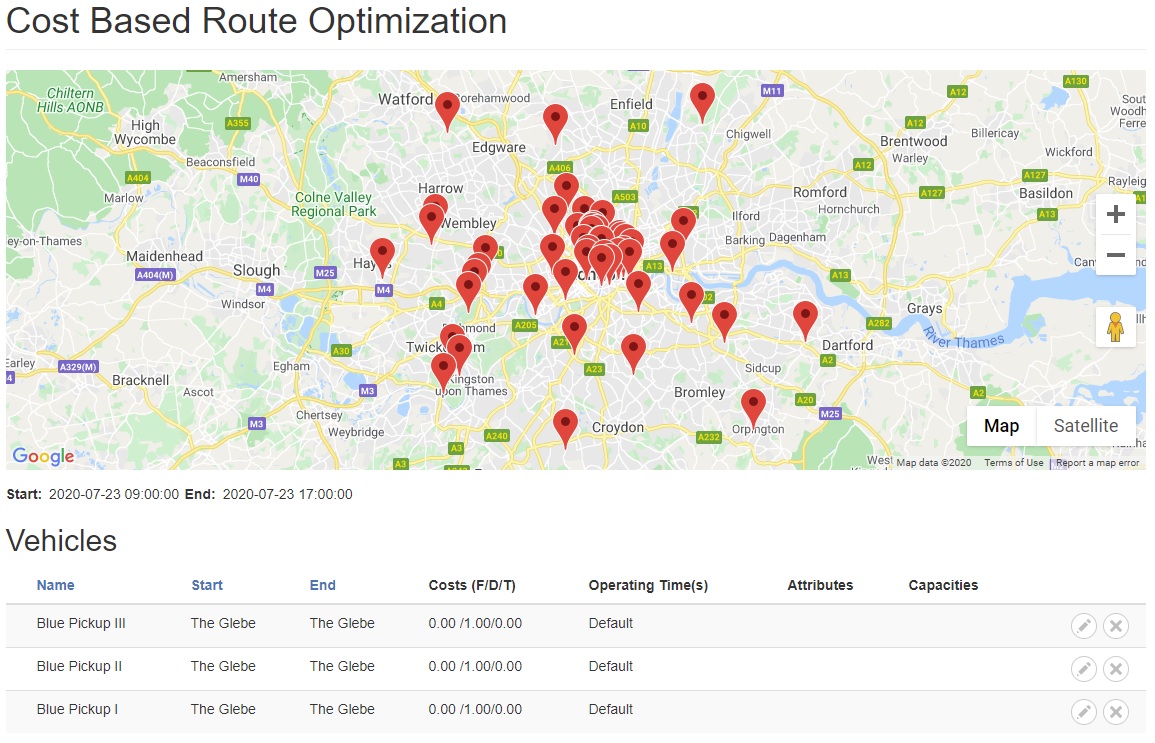
Costs are denoted by F/D/T (Fixed, Distance & Time). The time based costs for each vehicle is set to 0, meaning that time does not contribute to the overall cost of the system (something that obviously doesn’t apply to delivery companies in the real world). The distance cost is $1/km.
Optimizing this delivery schedule (which can include deliveries and pickups of any type) gives the following result.
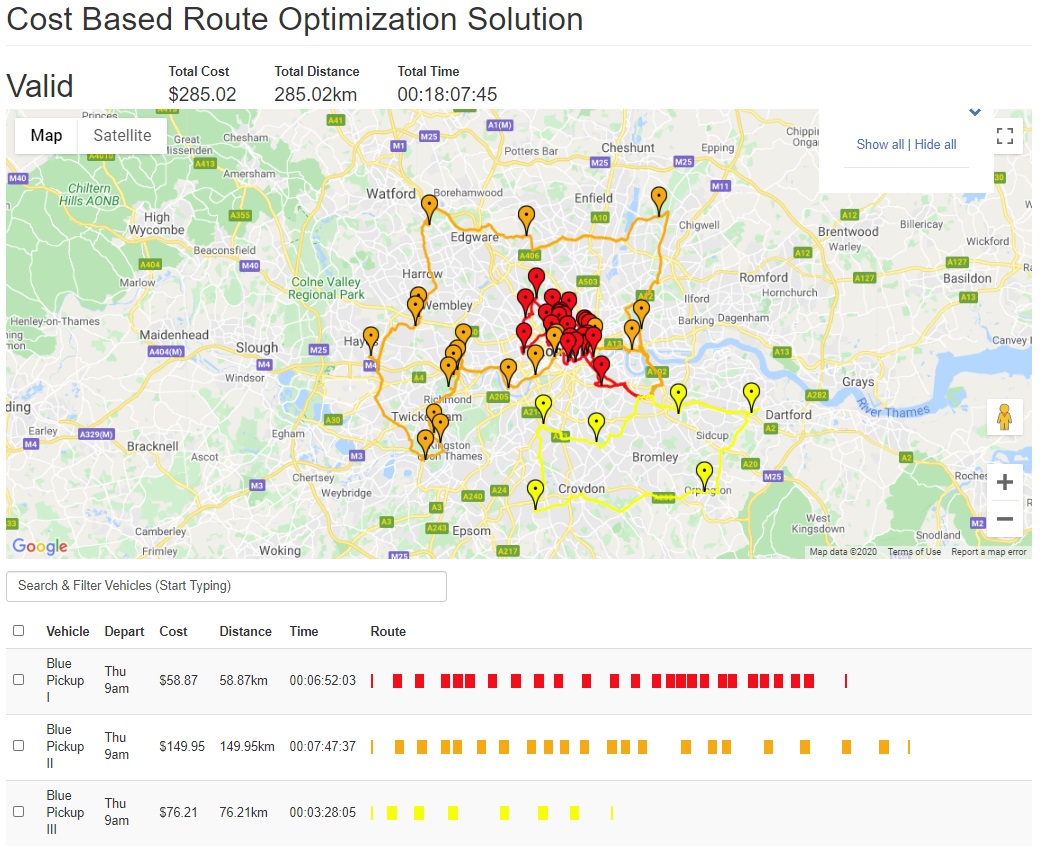
This looks like a perfectly respectable result. And it is. Given that it only has distance based cost data to work with.
Companies optimizing their fleets and delivery schedules based on distance only route optimizations would never suspect that they are not utilizing the most efficient route optimization solutions. Essentially, they're leaving money on the table without knowing it.
Distance & Time Cost Based Route Optimization
Let's change the scenario slightly to assign a value to the amount of time each vehicle spends on the road. After all, driver salaries are paid by the hour and form a significant portion of the overall costs of transport, logistics and deliveries.

Each vehicle has an identical time based cost of $10 per hour. After optimizing this schedule (which is identical except for the change in time based costs), we obtain the following result.
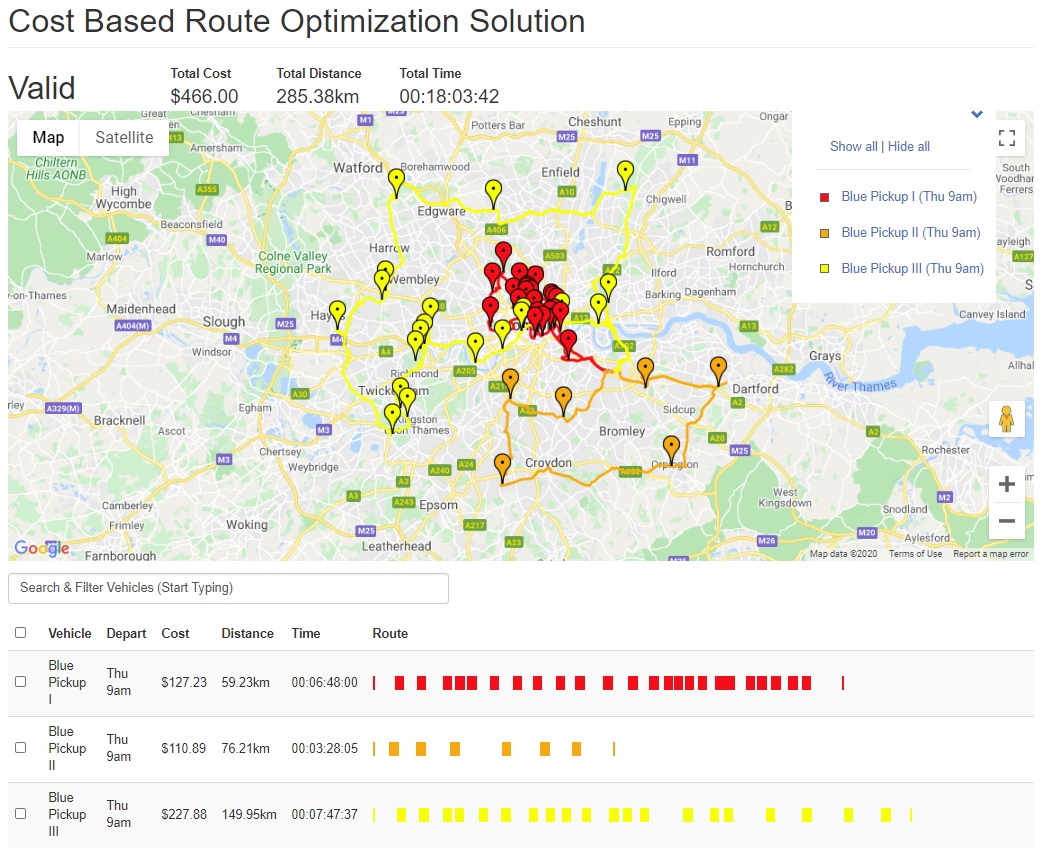
Pretty similar looking. In fact, that's what we'd expect given that the time based costs are identical for each vehicle, right? After all, if each vehicle costs us exactly the same there should be no change.
Except, there's a subtle difference here.
Go back to the distance only cost based route optimization solution and look at the total time (displayed above the map). Now compare that to the total time from the distance and time based optimization solution.
It took less time. Approximately 4 minutes less.
A few minutes here or there might not seem like a lot, but this is a very small optimization and the differences can pile up over time leading to significant decreases in cost.
The importance of taking into account both time and distance based costs becomes even more evident if we move away from this simple example where all the vehicles in our small fleet incur identical costs.
Variable Time & Distance Cost Based Route Optimization
Let's pretend that one of our vehicles requires a driver and a partner in order to complete some deliveries - essentially doubling the time-based cost for that vehicle.

Blue Pickup III now has a time cost of $20 per hour, double that of the other two vehicles. With all other aspects of this delivery schedule remaining unchanged, this is the result of the optimization.
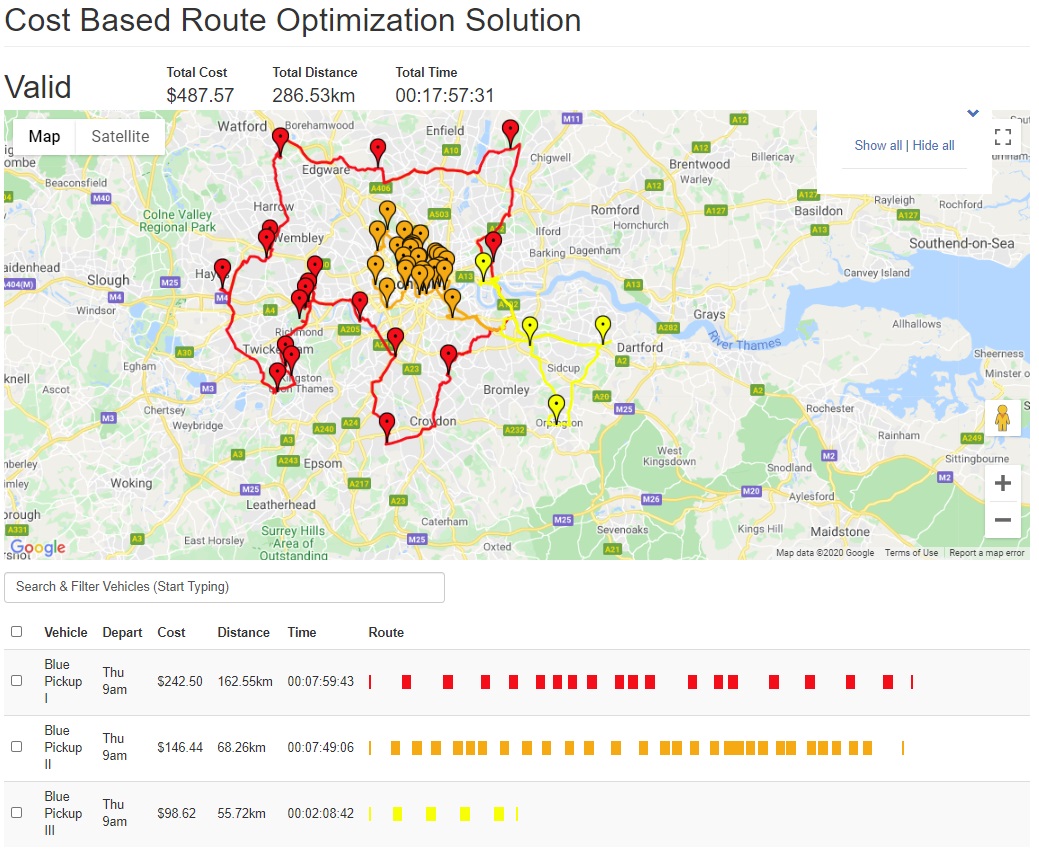
Again, this appears reasonable to the eye. On closer inspection, you'll notice that Blue Pickup III, the vehicle with double the time based operating cost, ended up only being utilized for a very short amount of time.
That probably sounds reasonable given that we intuitively understand the business objective is to lower the overall cost of the fleet.
This type of solution is completely impossible for any system that only takes into account distance based costs. A distance cost only system would still return something resembling our initial route optimization solution that was time-cost agnostic.
Real World Time & Distance Cost Based Route Optimization
Modern companies operate diverse fleets with many different vehicle types. These not only have differing carrying capacities, they also have different associated costs per distance.
Let's assume that Blue Pickup I is a slightly older vehicle that is not quite as fuel efficient.
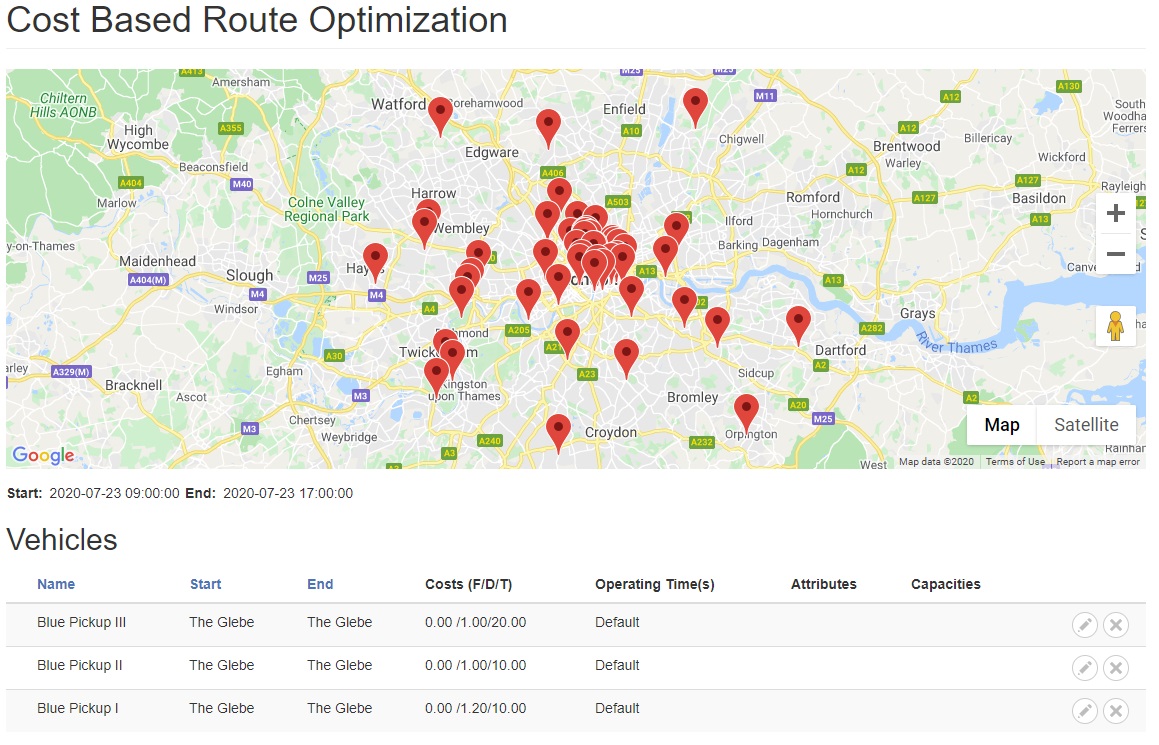
Blue Pickup I incurs a distance based cost of $1.20 - as opposed to the two newer vehicles that only cost $1 per km.
The result is pretty interesting, and possibly not what you might expect at first glance.
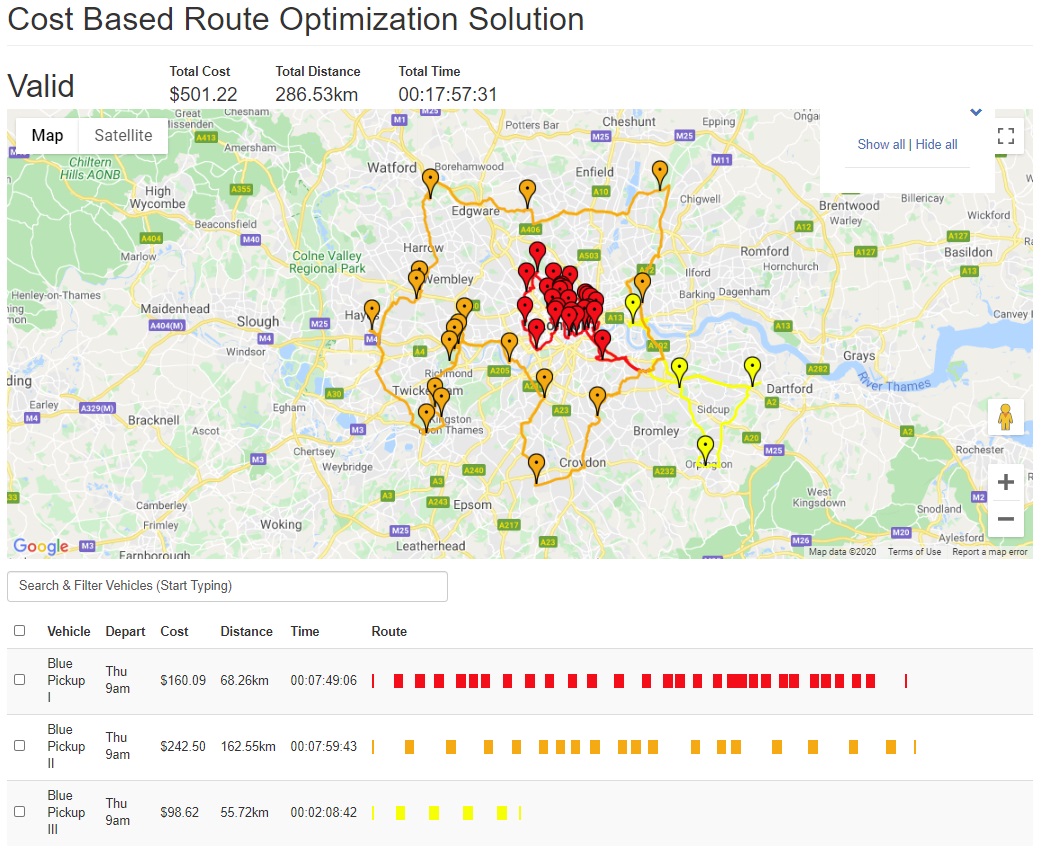
Blue Pickup I actually spends a long time making deliveries. In fact only about 10 minutes shy of the 8 hours allotted by the schedule constraints - almost the same amount of time spent by the cheapest vehicle, Blue Pickup II.
There's a huge difference in their optimized routes. Look closely at the amount of distance each one travels. Blue Pickup I travels a smidgen over 68km, while Blue Pickup II had to travel more than twice that at just over 162km.
At the same time, the first pickup needed to travel as little as possible to keep its inflated distance cost from driving up the overall cost of the fleet.
You can try optimizing routes and delivery planning for your own fleet with one month's free route optimization at Optergon.
